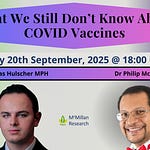Over the past few years, we’ve faced waves of challenges with viral infections, but the idea of a "tripledemic" or even "quaddemic" might sound like sensationalism. Unfortunately, the data tells a different story. Flu, COVID-19, respiratory syncytial virus (RSV), and now norovirus are colliding in ways that strain our healthcare systems and test our immune defenses.
What’s driving this surge of simultaneous infections? More importantly, what can we do about it? The answers lie not only in understanding the science of viral infections but also in applying a simple, proactive strategy that’s entirely within our control.
What’s Behind the Tripledemic?
The term "tripledemic" emerged to describe the simultaneous rise of flu, RSV, and COVID-19. By 2024, this concept expanded to include norovirus, giving rise to the "quaddemic." The NHS has already reported alarming increases: flu cases up by 350%, norovirus by 86%, and RSV circulating widely.
But why is this happening now? Early explanations centered on "immunity debt," the idea that reduced exposure to viruses during lockdowns left people more vulnerable once restrictions eased. While this might explain the 2022 surge, it doesn’t hold for 2023 and 2024. Something deeper is at play.
The Role of Interferon and Immune Suppression
Our body’s first line of defense against viral infections is the interferon response. Interferons are signaling proteins that warn other cells of viral presence, shutting down potential infection pathways and activating the broader immune system.
SARS-CoV-2, the virus behind COVID-19, is uniquely adept at suppressing the interferon response. This suppression allows it to spread silently, often without symptoms, which was a major driver of the pandemic. However, ongoing COVID-19 circulation, combined with repeat infections and vaccination strategies, appears to have left populations with weakened interferon responses.
This suppression doesn’t just make it harder to fight off COVID-19—it affects the body’s ability to fend off other viruses like flu, RSV, and norovirus. The result? Co-infections that hit harder and spread faster, particularly in individuals with already compromised immunity.
A Simple but Overlooked Solution
Here’s the good news: there’s a straightforward way to bolster your interferon response and support your immune system—optimize your vitamin D levels.
Vitamin D isn’t just about bone health. It plays a crucial role in modulating the immune system, including enhancing the interferon response. While some studies have shown mixed results on vitamin D’s impact on preventing infections, the broader evidence points to its significant benefits in reducing the severity of viral illnesses.
Practical Steps to Boost Your Vitamin D
Test Your Levels: Don’t guess—know your vitamin D status. A simple blood test can reveal if you’re deficient.
Supplement Wisely: Aim for levels in the range of 150–200 nmol/L (or 60–80 ng/mL in U.S. units). For many, this means supplementing with 2,000–4,000 IU daily, though higher doses may be needed for those with severe deficiencies.
Reassess Regularly: After 3–6 months of supplementation, recheck your levels to ensure they’re in the optimal range.
Don’t Forget Sunlight: Natural sunlight is one of the best sources of vitamin D. Spend time outdoors whenever possible, especially in the summer months.
The Bigger Picture
The idea of facing a tripledemic—or worse, a quaddemic—might feel overwhelming. But by understanding the science of immune suppression and taking proactive steps like optimizing vitamin D levels, we can significantly reduce our risk of severe illness.
This isn’t just about protecting yourself; it’s about reducing the overall burden on healthcare systems and ensuring that we’re prepared for the challenges of evolving viruses.
Final Thoughts
While public health measures like vaccines play a critical role, individual strategies like boosting vitamin D offer an additional layer of protection. These steps are simple, cost-effective, and within everyone’s reach.
As we navigate this winter, let’s prioritize our health with informed decisions and practical actions. Together, we can mitigate the impact of these viral surges and emerge stronger.










